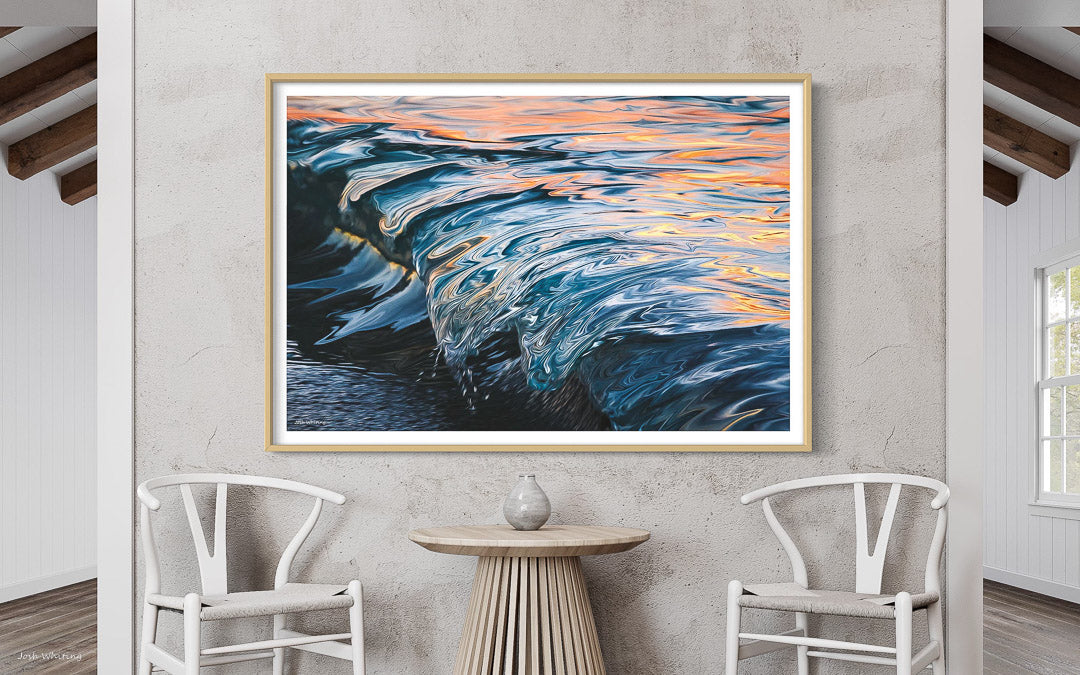Wall Art Size Guide: Find the Perfect Fit for Your Space
As a professional photographer, you understand that the right wall art can transform a space, turning a blank canvas into a striking visual story. Whether you're showcasing your own photographic work or helping clients choose the ideal pieces for their homes, understanding the intricacies of wall art sizes is crucial. Our wall art size guide is crafted to help you navigate these choices, ensuring that each piece you select enhances the room and speaks volumes about your artistic vision.

Understanding the Basics of Wall Art Sizing
The first step in selecting the right wall art size is understanding the space it will occupy. Consider the dimensions of the wall and the furniture that surrounds it. A piece that's too small can get lost, while one that's too large can overwhelm the room. As a general rule of thumb, aim for your wall art to take up 60-75% of the available wall space. This balance ensures your art complements the room without overpowering it.
Small Spaces, Big Impact
For smaller areas, such as hallways or cozy nooks, smaller pieces or collections of gallery wall art can create a significant impact. Groupings of artworks can be arranged with symmetry or in a more eclectic style to add character and depth. For more inspiration on utilizing smaller spaces, explore modern large wall art ideas that can be adapted for any size.
Medium-Sized Masterpieces
Medium-sized wall art is ideal for bedrooms, dining rooms, or office spaces. These pieces tend to be between 30 to 40 inches and can serve as focal points without overshadowing other design elements. Consider how the artwork's colors and themes will interact with the room's existing decor. For tips on hanging art in various settings, check out hanging big wall art.
Large Art for Large Spaces
Large spaces like living rooms or open-plan areas benefit from extra-large wall art. These pieces can range from 41 inches and above, offering a bold statement that draws the eye and anchors the room. When selecting large wall art, consider the height and width of the wall to maintain balance. For insights on selecting art for expansive walls, visit extra-large art for interiors.
Creating a Gallery Wall
Creating a gallery wall is an excellent way to display multiple pieces of art without committing to a single large piece. This approach allows for personal expression and flexibility. Mix different sizes, styles, and frames to create a cohesive look. For guidance on designing a gallery wall, explore wall decor ideas.
Choosing the Right Frame and Matting
The frame and matting can significantly affect how your wall art is perceived. Choose a frame style that complements the artwork and the room's decor. Matting can add depth and focus to the artwork, providing a visual pause between the frame and the image. For a modern touch, consider frameless or floating frames.
Consider Lighting
Proper lighting can enhance your wall art by highlighting its colors and textures. Track lighting, picture lights, or strategically placed lamps can draw attention to the artwork, making it the focal point of the room. Ensure that the lighting does not create harsh shadows or glare on the artwork.

Frequently Asked Questions
What is the best size for wall art above a sofa?
For art above a sofa, aim for a piece that is approximately two-thirds the width of the sofa. This size creates a balanced look and ensures the art doesn't overpower the seating area.
How high should I hang my wall art?
A good rule of thumb is to hang wall art so the center of the piece is at eye level, typically around 57 to 60 inches from the floor. However, consider the room's furniture and ceiling height as well.
Can I mix different sizes of wall art in one room?
Absolutely! Mixing different sizes can create a dynamic and interesting look. Use larger pieces as focal points and smaller pieces to add depth and variety. For more ideas, visit large wall art ideas.

